Royal wedding 2018: Princess Eugenie's dress in detail
- Published
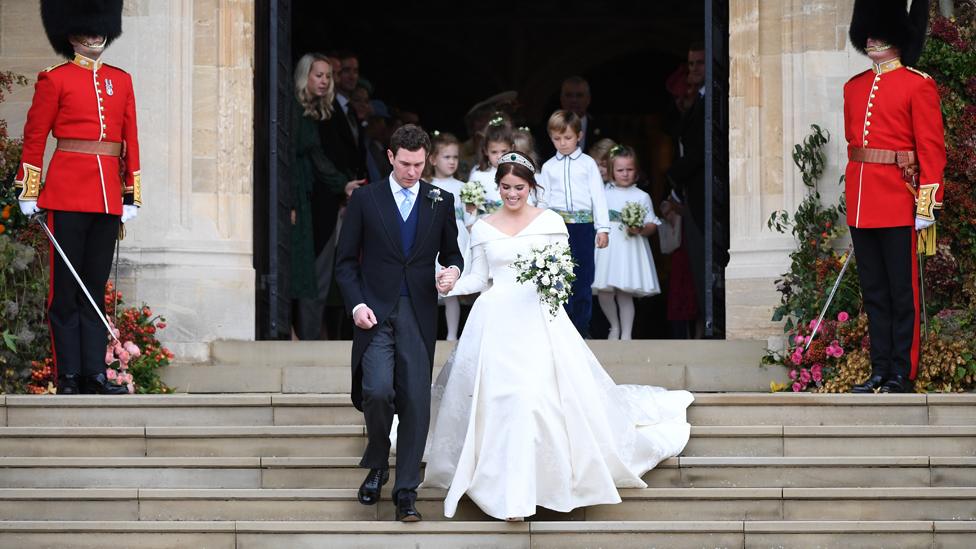

Princess Eugenie's simple and elegant wedding dress, designed by Peter Pilotto and Christopher De Vos of British-based label Peter Pilotto, has finally been revealed.
Notably, the princess chose not to have a veil, showing off the low back of the dress.

The designers
Peter Pilotto and Christopher De Vos founded their British-based label in London in 2007.
The brand is known for its innovative textile design, paired with a modern feminine silhouette, and the duo operate from their studio in east London.
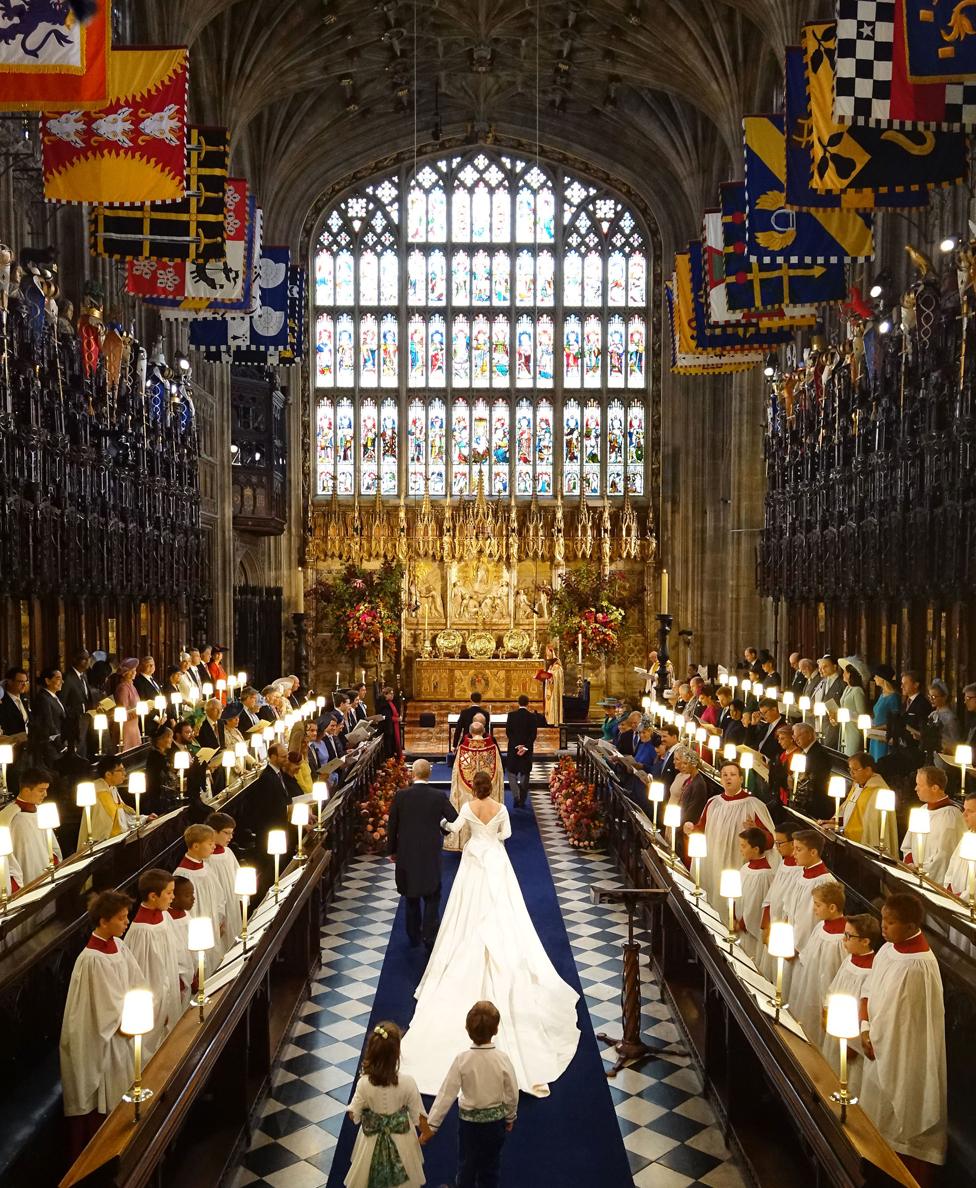

Princess Eugenie has been wearing designs by the label for several years.
She met the designers when she was co-hosting an event in support of women artists.
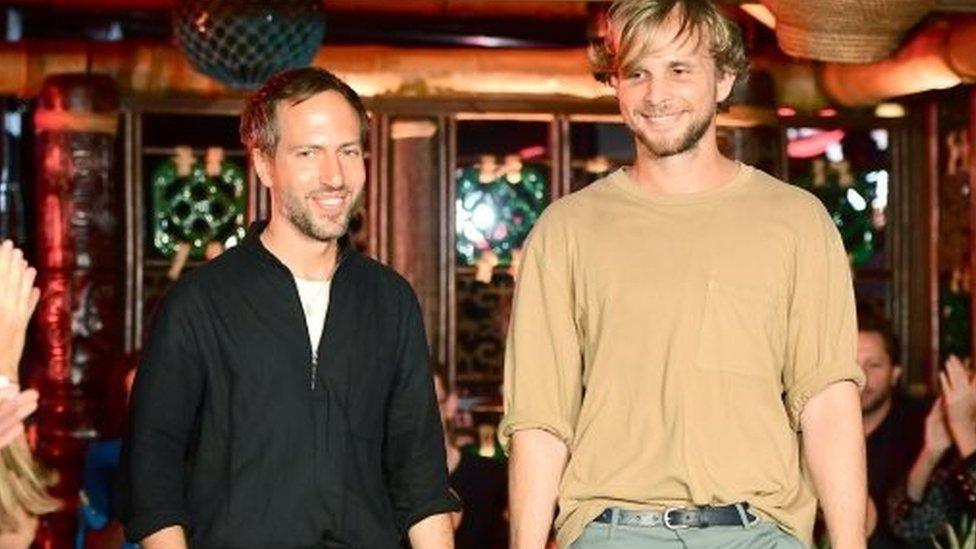
Peter Pilotto and Christopher De Vos designed Princess Eugenie's wedding dress

The bodice
The dress was developed layer-by-layer during several fittings. The designers began with the corset and complex underskirt before moving on to the fitted bodice and full pleated skirt.
It features a neckline that folds around the shoulders to a low back that drapes into a flowing full-length train.


The low back of the dress was included in the design at the request of Princess Eugenie, who had surgery, aged 12, to correct scoliosis.
The condition causes the spine to bend to one side, and can make the back appear rounded and the shoulder blades more prominent.
Before the wedding, the princess told ITV: "I think you can change the way beauty is, and you can show people your scars and I think it's really special to stand up for that."
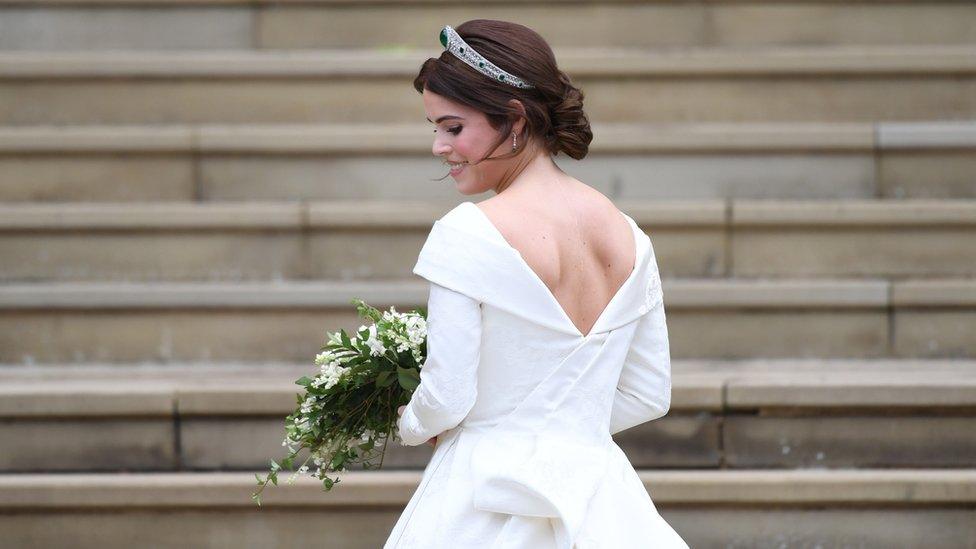


The material
The fabric was designed by Mr Pilotto and Mr De Vos at their studio and includes a number of symbols that are meaningful to Princess Eugenie as motifs.
A thistle representing Scotland acknowledges the couple's fondness for Balmoral, and a shamrock representing Ireland is a nod to the bride's Ferguson family.
The other symbols used including the York Rose - a nod to the princess's family name of York - and ivy, which represents the couple's home, Ivy Cottage, in Kensington Palace.
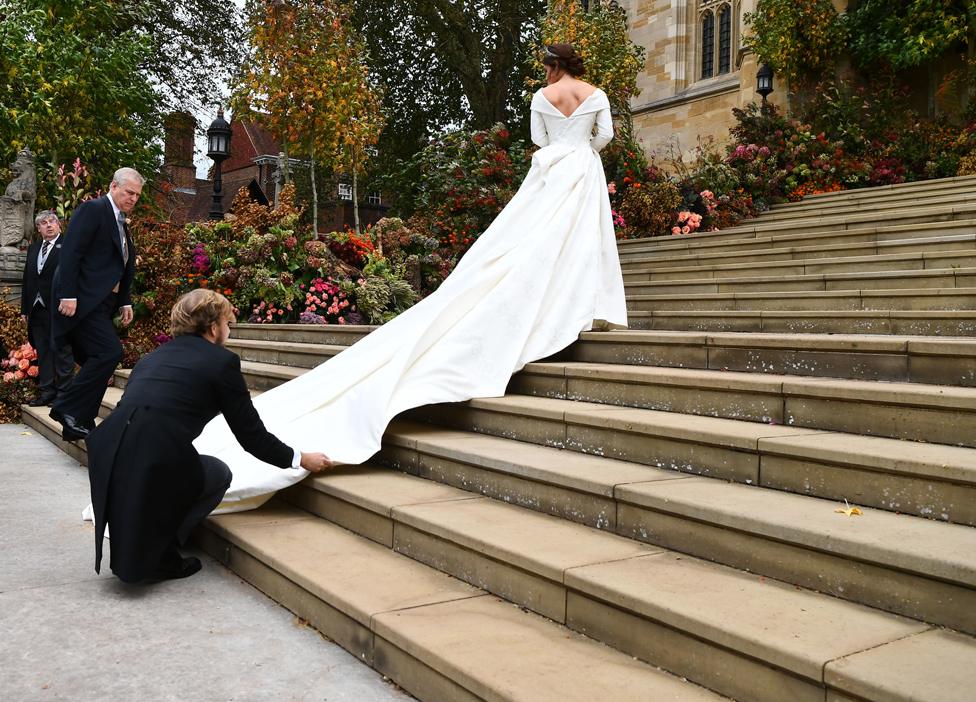

Mr Pilotto and Mr De Vos reinterpreted these symbols in a "garland of rope-like motifs, woven into a jacquard of silk, cotton and viscose blend".
Once the artwork was completed, it was translated into a jacquard weave in the Como region of Italy.
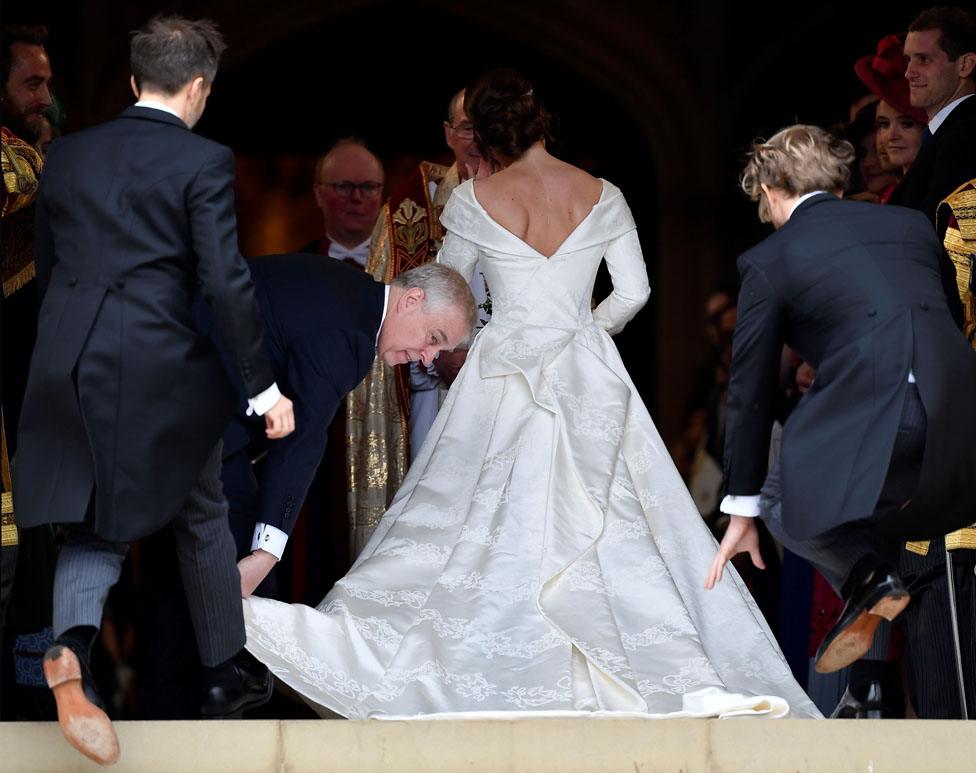


The tiara
Princess Eugenie wore the Greville Emerald Kokoshnik Tiara, lent to her by the Queen.
The tiara was made by the jeweller Boucheron for British society hostess Dame Margaret Greville in 1919. It was created in the fashionable "kokoshnik" style popularised in the Russian Imperial Court, the Royal Family website says.
Mrs Greville, known as Maggie to her friends, held parties at her estate - Polesden Lacey in Surrey - from 1906. She entertained royalty, politicians and celebrities, including King Edward VII and Winston Churchill.
On her death in 1942, the tiara was bequeathed to the Royal Family.
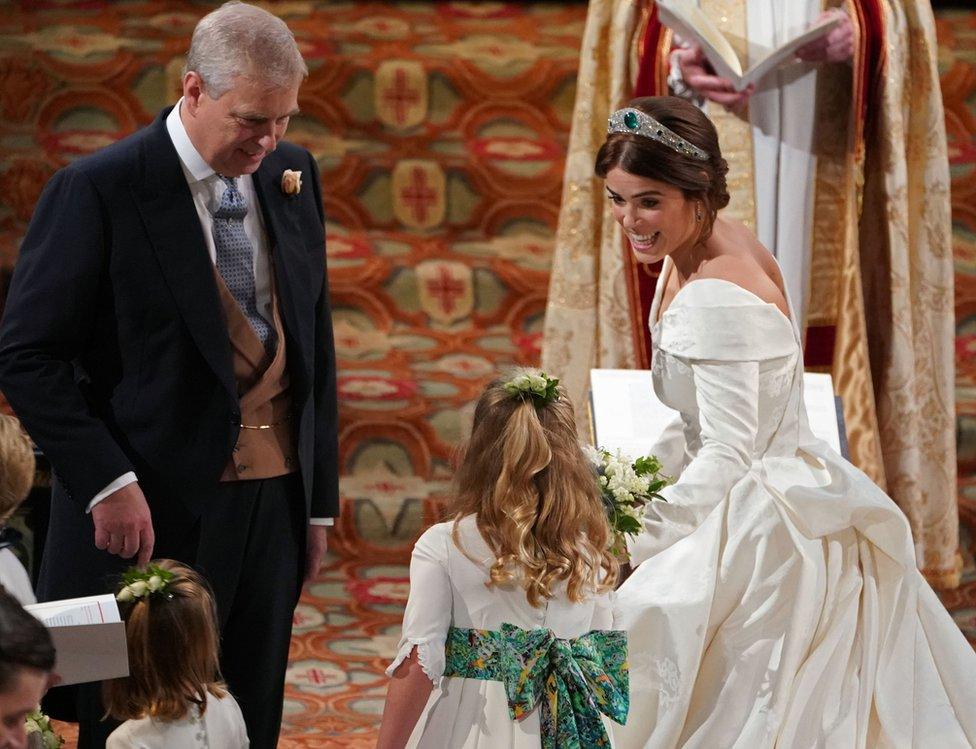

It is made up of brilliant and rose cut diamonds pave set in platinum, with six emeralds on either side.
Princess Eugenie is wearing diamond and emerald drop ear-rings - her wedding gift from the groom.
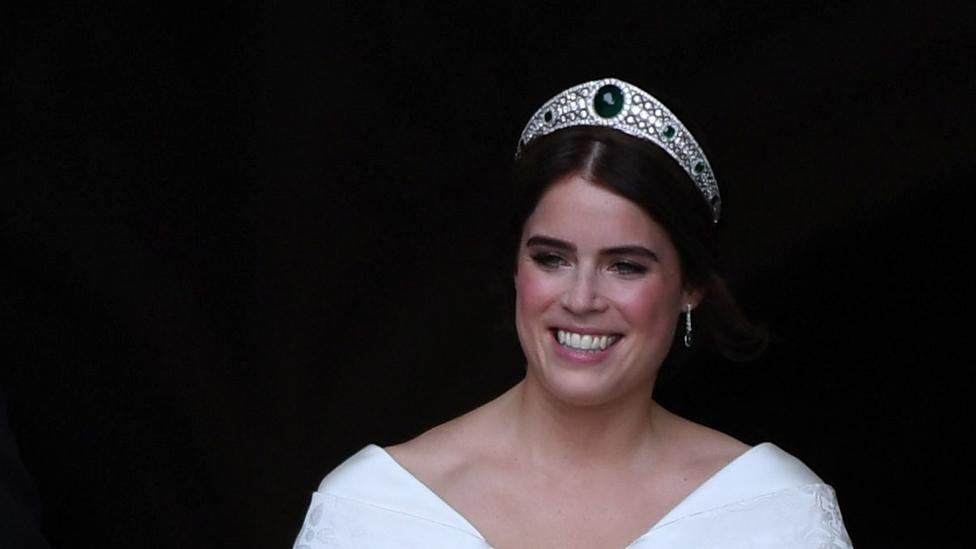


The bouquet
The wedding bouquet consists of lily of the valley, stephanotis pips, hints of baby blue thistles, white spray roses and trailing ivy.
It was created by floral designer Rob Van Helden's sister, Patrice Van Helden Oakes.
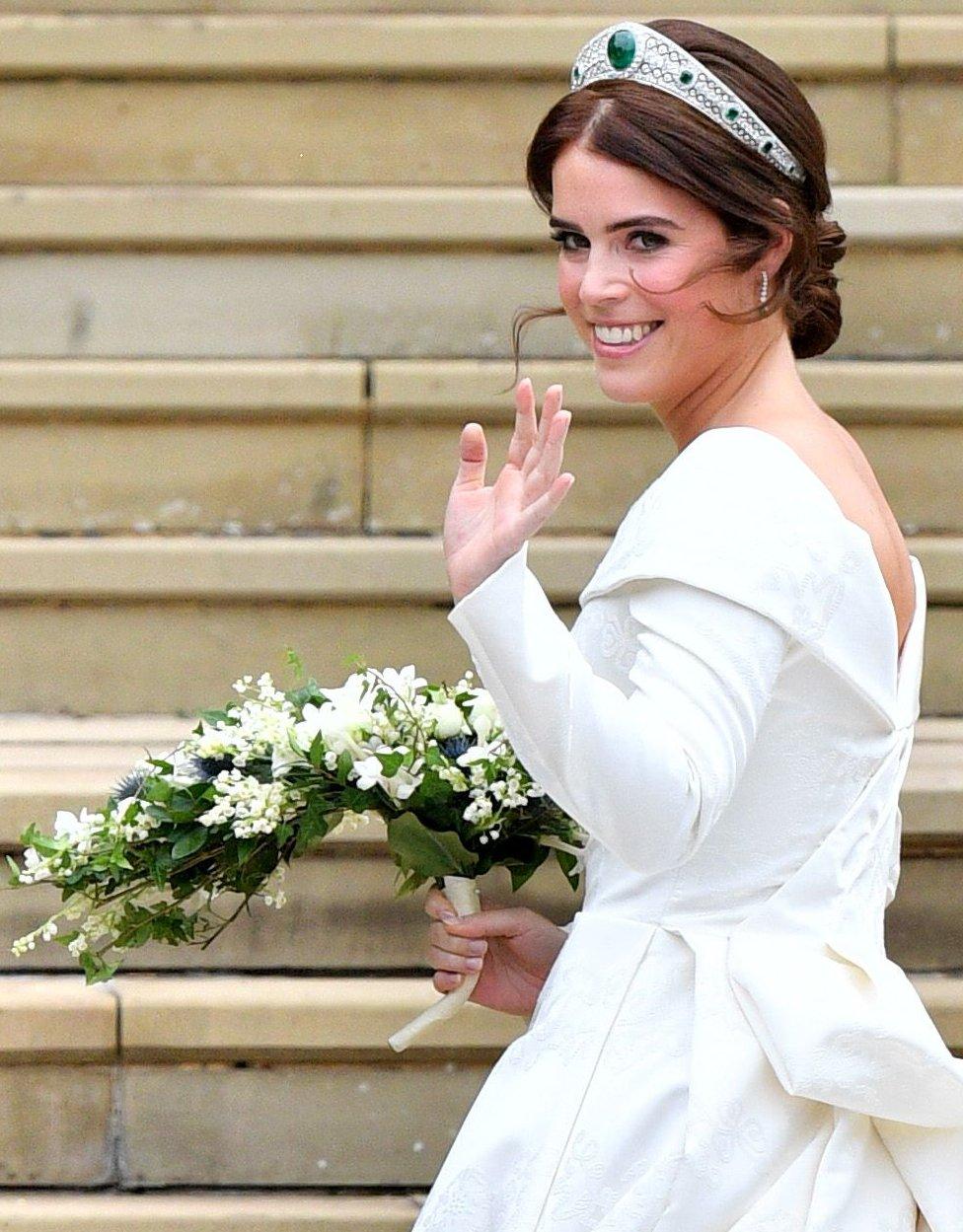

Sprigs of myrtle from Osborne House in the Isle of Wight are also included in the bouquet.
The tradition of carrying myrtle began after Queen Victoria was given a nosegay containing myrtle by Prince Albert's grandmother during a visit to Gotha in Germany.


In the same year, Queen Victoria and Prince Albert bought Osborne House as a family retreat, and a sprig from the posy was planted against the terrace walls.
The myrtle was first carried by Queen Victoria's eldest daughter, Princess Victoria, when she married in 1858.

The shoes
Princess Eugenie's shoes are satin peep-toe heels by Charlotte Olympia.

All pictures subject to copyright.
- Published12 October 2018
